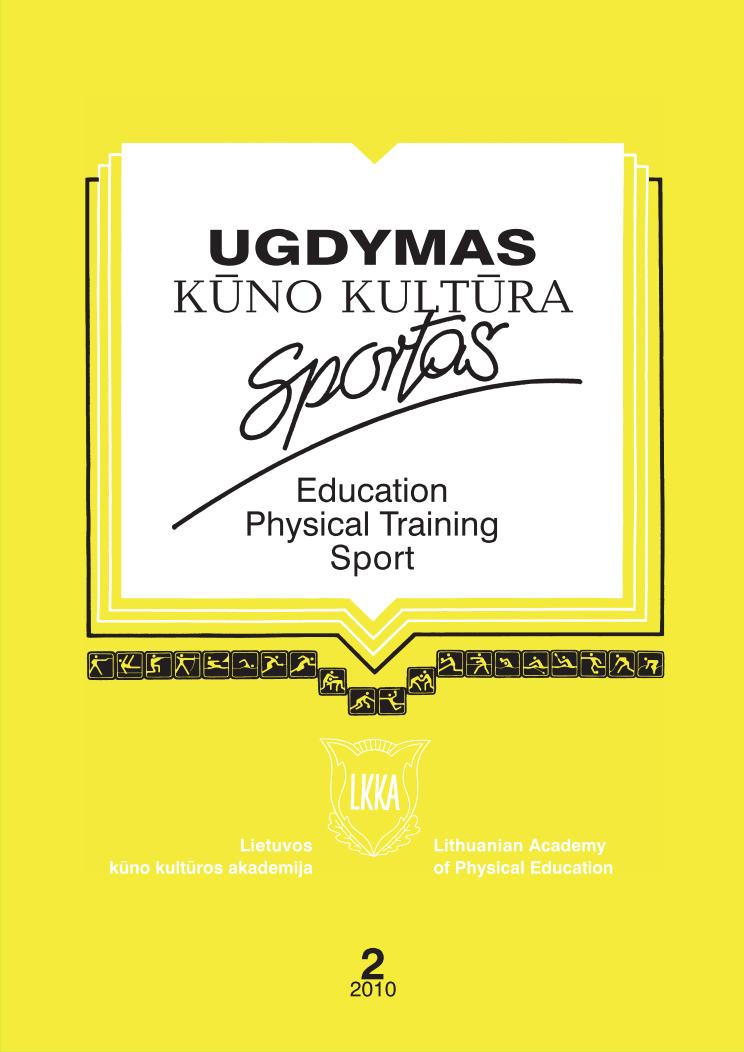Changes in Concentration of Creatine Kinase, Body Composition and Lipoprotein during Menstrual Cycle
Abstract
The aim of our study was to establish the dependence of changes in the concentration of creatine kinase, body composition and lipoprotein on the follicular phase and ovulation. The subjects were healthy and physically active women (n = 9) with normal menstrual cycle, whose age was 19—23 years, body weight — 58.2 ± 6.1 kg, height — 168.4 ± 5.6 cm. All the participants had not used oral contraceptives for 6 months and had regular menstrual cycles. Ethical approval was obtained from Kaunas Regional Biomedical Research Ethics Committee (Report Number BE-2-24). Each subject measured her basal body temperature every morning 3 months before the experiment. The basal body temperature increased approximately by 0.3 °C after ovulation, which is sustained throughout the luteal phase. By the basal body temperature we estimated the approximate day of ovulation, and thus the relative length of follicular and luteal phases. We performed two experiments with each participant: in the follicular phase and ovulation. The days of experiment were chosen considering the duration of the menstrual cycle and the ovulation day of each participant. At the beginning of every experiment the body composition values: weight, BMI, body fat mass (%), body fat mass (kg), muscle mass (kg), water amount (kg) were estimated. The samples of 5 ml and 2 ml venum blood were taken toestablish the amount of estradio17β-estradiol, serum total cholesterol, high density lipoprotein cholesterol, triglyceride and creatine kinase concentration. Creatine kinase concentration was measured 24, 48, 72 hours after the load (100 jumps on the vertical jump force plate from a 75 cm stage). After 10—15 min of not intensive warming-up (slow pedaling veloergometer, heart rate 120—130 b / min) 100 jumps on the vertical jump force plate from a 75 cm stage were performed, with the knee joints flexed up to the angle of 90° (hands on loin). Hormonal analysis confirmed that the subjects were in the correct estrogen status, but no significant change was observed in the body composition and triglyceride values over the menstrual cycle. High density lipoprotein cholesterol and serum total cholesterol values significantly differed in ovulation compared to the values in the follicular phase. Due to the small sample size CK concentration did not significantly differ during the menstrual cycle, but the amount of CK concentration was lager in the follicular phase than in ovulation.
Keywords: lipoprotein contentration, creatin kinase, body composition, follicular phase, ovulation.
Downloads
Published
Issue
Section
License
Copyright (c) 2018 Baltic Journal of Sport and Health Sciences

This work is licensed under a Creative Commons Attribution 4.0 International License.






